Windows Health Center
Posted: January 31, 2011
Threat Metric
The following fields listed on the Threat Meter containing a specific value, are explained in detail below:
Threat Level: The threat level scale goes from 1 to 10 where 10 is the highest level of severity and 1 is the lowest level of severity. Each specific level is relative to the threat's consistent assessed behaviors collected from SpyHunter's risk assessment model.
Detection Count: The collective number of confirmed and suspected cases of a particular malware threat. The detection count is calculated from infected PCs retrieved from diagnostic and scan log reports generated by SpyHunter.
Volume Count: Similar to the detection count, the Volume Count is specifically based on the number of confirmed and suspected threats infecting systems on a daily basis. High volume counts usually represent a popular threat but may or may not have infected a large number of systems. High detection count threats could lay dormant and have a low volume count. Criteria for Volume Count is relative to a daily detection count.
Trend Path: The Trend Path, utilizing an up arrow, down arrow or equal symbol, represents the level of recent movement of a particular threat. Up arrows represent an increase, down arrows represent a decline and the equal symbol represent no change to a threat's recent movement.
% Impact (Last 7 Days): This demonstrates a 7-day period change in the frequency of a malware threat infecting PCs. The percentage impact correlates directly to the current Trend Path to determine a rise or decline in the percentage.
| Threat Level: | 10/10 |
|---|---|
| Infected PCs: | 61 |
| First Seen: | February 1, 2011 |
|---|---|
| Last Seen: | May 6, 2024 |
| OS(es) Affected: | Windows |
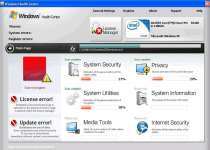 Windows Health Center is far from the independent, helpful software it tries to pass itself off as. Rather, it's just one head of a multifaceted delivery system for fake Windows utilities. You might see it like a hydra – as soon as users recognize one infection and delete it, criminals create a new one with a fresh name, while keeping the delivery method the same. As long as it's present, Windows Health Center will chew on your system processes until you find it difficult to use your computer, all while constantly demanding money from you. You should treat this rogue infection as the threat it is, ignore all its bullying behavior, and scrub your system clean of it.
Windows Health Center is far from the independent, helpful software it tries to pass itself off as. Rather, it's just one head of a multifaceted delivery system for fake Windows utilities. You might see it like a hydra – as soon as users recognize one infection and delete it, criminals create a new one with a fresh name, while keeping the delivery method the same. As long as it's present, Windows Health Center will chew on your system processes until you find it difficult to use your computer, all while constantly demanding money from you. You should treat this rogue infection as the threat it is, ignore all its bullying behavior, and scrub your system clean of it.
The Trojan Horse Delivers Its Payload
Just like many other fake scanners that are distributed in the same way, Windows Health Center was created just in 2011 and hails from the Russian Federation. Once there, it will engage in the usual rogue malware hostilities – creating false error messages and interfering with system processes while trying to look like a solution to all these made up woes.
However, Windows Health Center can't get on your system by itself, and needs some sneaky assistance to do its damage. The infection's mode of transport is a fake Microsoft Security Essentials Alert Trojan. It begins with the following alert:
“Unknown Win32/Trojan was detected on your computer”
After that, it will prompt you to begin a (faked) scan, after which it will announce that the Trojan.Horse.Win32.PAV.64.a infection was found. If you see these signs, then you should disregard the error messages and take appropriate steps to root out and destroy the true infection. If you go along with the Trojan's little plan, you will find yourself installing another malware infection. This secondary malware installation will usually be a rogue fake scanner, and it might just be Windows Health Center.
After the Fateful Click
If you clicked 'OK' reflexively or by pure accident, Windows Health Center will rear its head up quite blatantly, greatly in contrast to the stealth Trojan delivery. The first thing it will request of you after installation is that you reboot your computer. From that point on, Windows Health Center will load itself automatically, and barrage you with warnings before even allowing you to enter your desktop. Some of these messages may be:
- Warning! Database update failed!
Database update failed!
Outdated viruses databases are not effective and can't
guarantee adequate protection and security for your PC!
Click here to get the full version of the product and update
the database! - System Security Warning
Attempt to modify register key entries is detected. Register entries analysis is recommended. - Warning!
Name: taskmgr.exe
Name: C:WINDOWStaskmgr.exe
Application that seems to be a key-logger is detected. System information security is at risk. It is recommended to enable the security mode and run total System scanning - Warning! Running trial version!
The security of your computer has been compromised!
Now running trial version of the software!
Click here to purchase the full version of the software
and get full protection for your PC! - System component corrupted!
System reboot error has occurred due to lsass.exe system process failure.
This may be caused by severe malware infections.
Automatic restore of lsass.exe backup copy completed.
The correct system performance can not be resumed without eliminating the cause of lsass.exe corruption. - Microsoft Security Essentials Alert
Microsoft Security Essentials detected potential threats that might compromise your privacy or damage your computer. Your access to these items may be suspended until you take an action.
.
As you can see from the taskmgr.exe warning, these errors can be context-sensitive depending on the actions of the user. If you're lulled into trusting Windows Health Center, it will waste your time with a scan that's just as full of lies as the Trojan one was. Windows Health Center will then state that it cleansed most infections, in an attempt to present itself as competent and useful. However, Windows Health Center will very carefully announce that some infections, particularly those related to crucial files like browser executables, can only be cleansed by the full version.
Don't Give Rogue-Designing Criminals a Payoff
For all its outer innocence, Windows Health Center is no better than any other more blatantly destructive infection that would eat your files without mercy. The supposed full version contains no useful utilities for detecting or removing system threats! Removing Windows Health Center and any attendant infections should be the only thing on your mind.
To delete Windows Health Center, it's often best to use a true anti-malware scanner for this purpose, provided you have one available with an up to date database. If that's not a weapon in your arsenal, there are more down to earth methods. You will ultimately need to go to Safe Mode to find and delete all the relevant files, no matter how you choose to do it. Show Windows Health Center no mercy! After all, it's certainly not showing mercy to your computer or your bank account.
Aliases
More aliases (55)
Technical Details
File System Modifications
Tutorials: If you wish to learn how to remove malware components manually, you can read the tutorials on how to find malware, kill unwanted processes, remove malicious DLLs and delete other harmful files. Always be sure to back up your PC before making any changes.
The following files were created in the system:%TEMP%\apnolvuno\qxxblrghmof.exe
File name: qxxblrghmof.exeSize: 334.84 KB (334848 bytes)
MD5: 92de108e6b850189e63fe78b08a7a9a2
Detection count: 83
File type: Executable File
Mime Type: unknown/exe
Path: %TEMP%\apnolvuno
Group: Malware file
Last Updated: February 28, 2011
%TEMP%\qkhfoaqvv\pfkqlbgsika.exe
File name: pfkqlbgsika.exeSize: 335.36 KB (335360 bytes)
MD5: bfb1dc650d753ab1c5ba6f0db3c02b91
Detection count: 65
File type: Executable File
Mime Type: unknown/exe
Path: %TEMP%\qkhfoaqvv
Group: Malware file
Last Updated: March 1, 2011
%LOCALAPPDATA%\ctmon.exe
File name: ctmon.exeSize: 2.86 MB (2865152 bytes)
MD5: 4d1b0057fa1d08136eefd3c8a793b052
Detection count: 30
File type: Executable File
Mime Type: unknown/exe
Path: %LOCALAPPDATA%
Group: Malware file
Last Updated: February 2, 2011
%TEMP%\avaydbipc\xhhufgvsikk.exe
File name: xhhufgvsikk.exeSize: 334.33 KB (334336 bytes)
MD5: 3658a0575b3368b969476fc0253bd3d3
Detection count: 30
File type: Executable File
Mime Type: unknown/exe
Path: %TEMP%\avaydbipc
Group: Malware file
Last Updated: February 21, 2011
%TEMP%\kmwudgddh\xedmjpqsikk.exe
File name: xedmjpqsikk.exeSize: 334.84 KB (334848 bytes)
MD5: ea226cf8b6a223f2001a93a261de6492
Detection count: 11
File type: Executable File
Mime Type: unknown/exe
Path: %TEMP%\kmwudgddh
Group: Malware file
Last Updated: February 21, 2011
C:\rogueware samples\fakemovies\1f349c72ef9c9bb31c3fbd24d6b0fd0a99064cf72b4898586ca81b2186bad72b (2).exe
File name: 1f349c72ef9c9bb31c3fbd24d6b0fd0a99064cf72b4898586ca81b2186bad72b (2).exeSize: 2.39 MB (2393600 bytes)
MD5: 54e3a7e3ab8555e2176863bad92dddc1
Detection count: 9
File type: Executable File
Mime Type: unknown/exe
Path: C:\rogueware samples\fakemovies\1f349c72ef9c9bb31c3fbd24d6b0fd0a99064cf72b4898586ca81b2186bad72b (2).exe
Group: Malware file
Last Updated: May 6, 2024
%COMMONPROGRAMFILES%\Java\Java Update\jusched.exe
File name: jusched.exeSize: 335.36 KB (335360 bytes)
MD5: 6d49cf4fe688ea50e61a170d3c1a8fd2
Detection count: 9
File type: Executable File
Mime Type: unknown/exe
Path: %COMMONPROGRAMFILES%\Java\Java Update
Group: Malware file
Last Updated: February 28, 2011
%TEMP%\felisxgql\larchvnsikk.exe
File name: larchvnsikk.exeSize: 334.33 KB (334336 bytes)
MD5: 08149c507dd1b5d3daa9ad26172eb4e1
Detection count: 3
File type: Executable File
Mime Type: unknown/exe
Path: %TEMP%\felisxgql
Group: Malware file
Last Updated: February 21, 2011
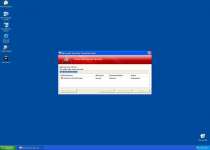
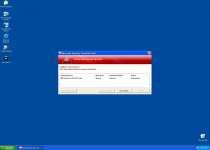
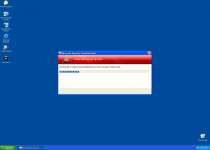
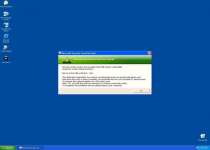
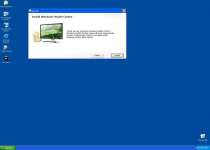
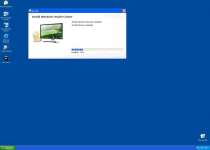
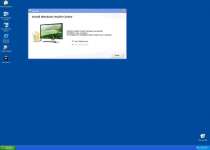
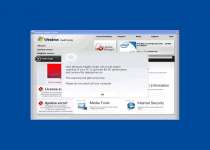
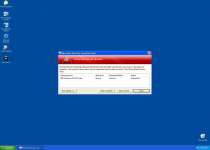
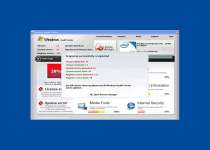
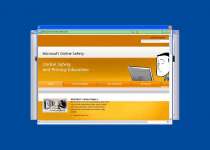
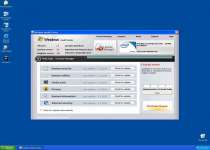
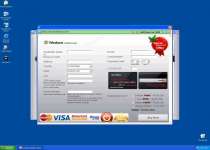
Leave a Reply
Please note that we are not able to assist with billing and support issues regarding SpyHunter or other products. If you're having issues with SpyHunter, please get in touch with SpyHunter customer support through your SpyHunter . If you have SpyHunter billing questions, we recommend you check the Billing FAQ. For general suggestions or feedback, contact us.